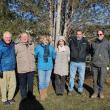With help from “1,000 points of light,” one beacon will keep burning
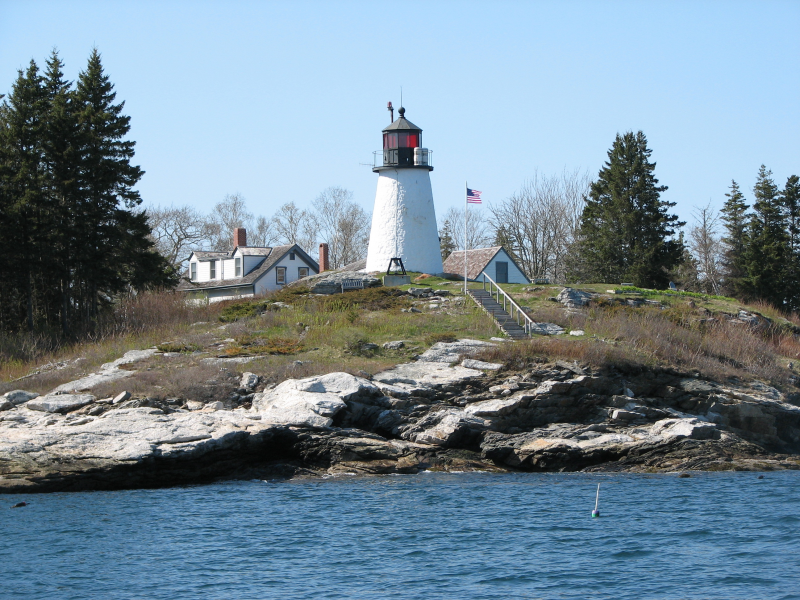 Since 1821, the lighthouse on Burnt Island has aided mariners in the Boothbay region. Courtesy of Elaine Jones
Since 1821, the lighthouse on Burnt Island has aided mariners in the Boothbay region. Courtesy of Elaine Jones
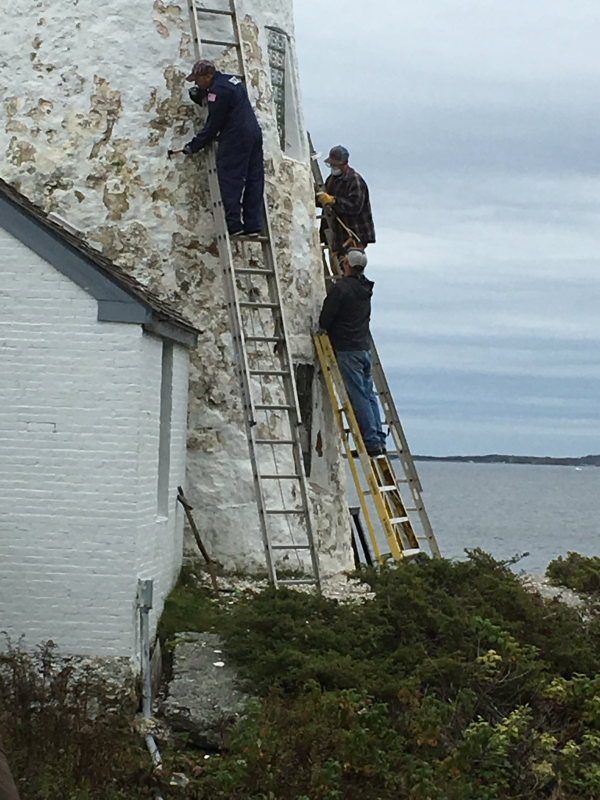 Members of the Coast Guard at work on the lighthouse. Courtesy of Elaine Jones
Members of the Coast Guard at work on the lighthouse. Courtesy of Elaine Jones
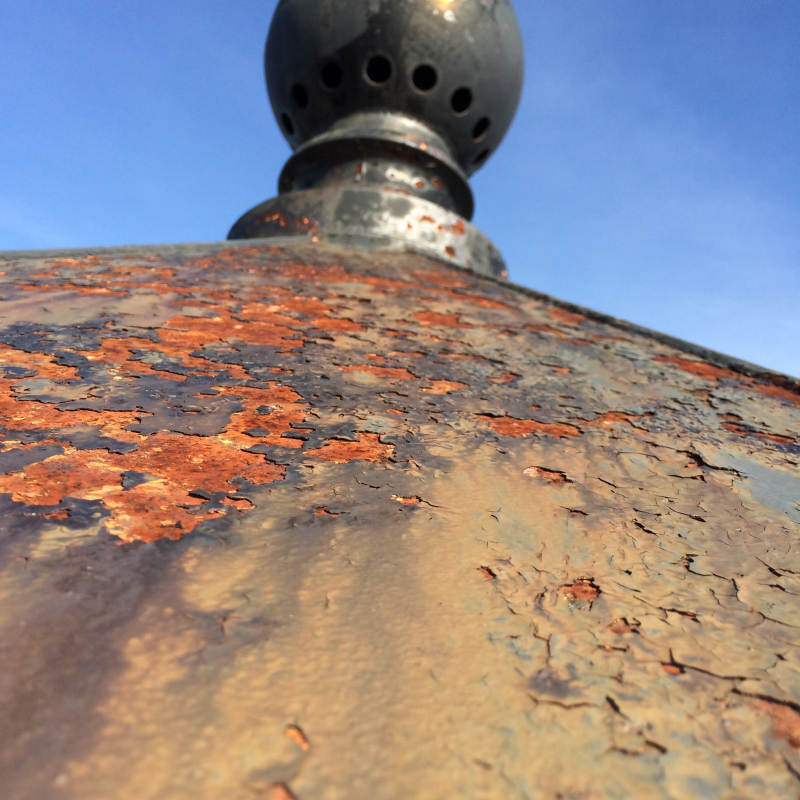 Rust on the roof of the lantern room is just one part of the repairs needed at Burnt Island Light. Courtesy of Elaine Jones
Rust on the roof of the lantern room is just one part of the repairs needed at Burnt Island Light. Courtesy of Elaine Jones
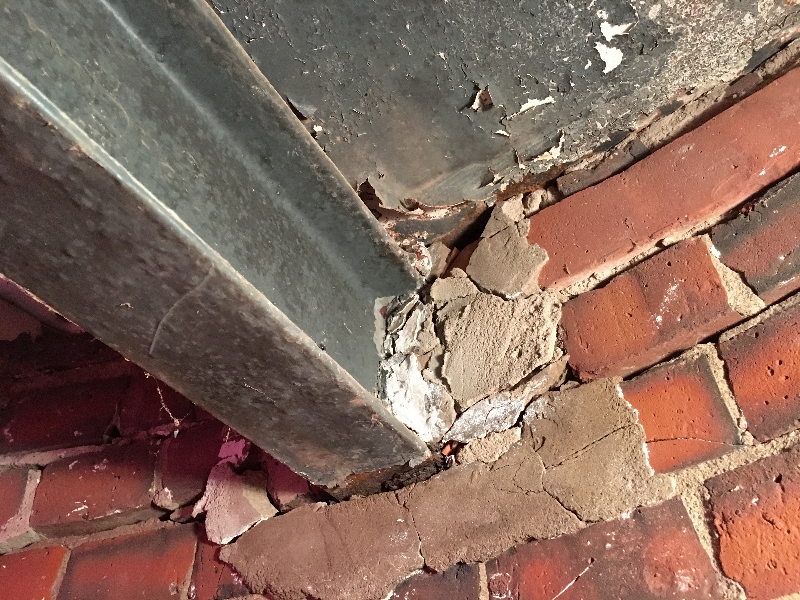 A beam in the lantern room needing repair. Courtesy of Elaine Jones
A beam in the lantern room needing repair. Courtesy of Elaine Jones
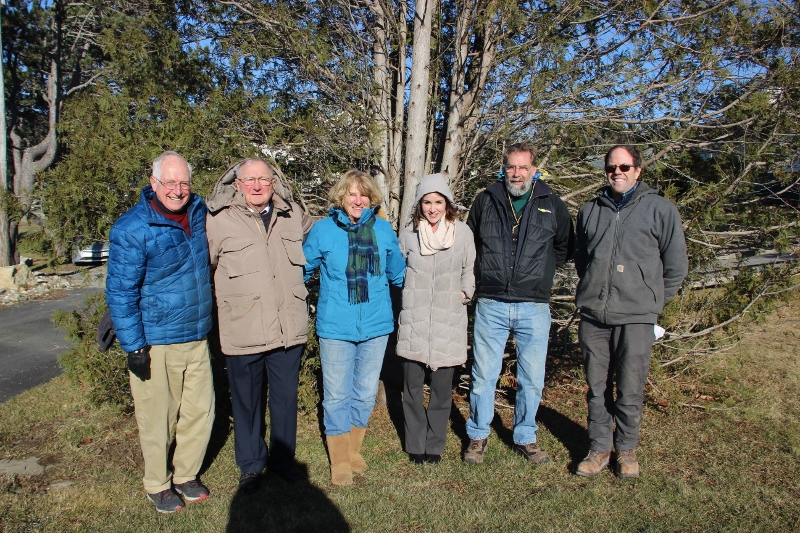 KBIL Board of Directors, from left: Jack Bauman, Howard Wright, Jean McKay, Melissa Holmes Whitt, Bruce White and Eric Wood. Absent: Penny Pollard, Carolyn Nichols and Dawn Kenealy. Courtesy of Elaine Jones
KBIL Board of Directors, from left: Jack Bauman, Howard Wright, Jean McKay, Melissa Holmes Whitt, Bruce White and Eric Wood. Absent: Penny Pollard, Carolyn Nichols and Dawn Kenealy. Courtesy of Elaine Jones
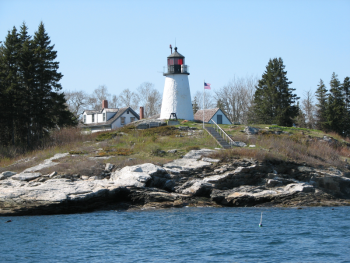 Since 1821, the lighthouse on Burnt Island has aided mariners in the Boothbay region. Courtesy of Elaine Jones
Since 1821, the lighthouse on Burnt Island has aided mariners in the Boothbay region. Courtesy of Elaine Jones
 Members of the Coast Guard at work on the lighthouse. Courtesy of Elaine Jones
Members of the Coast Guard at work on the lighthouse. Courtesy of Elaine Jones
 Rust on the roof of the lantern room is just one part of the repairs needed at Burnt Island Light. Courtesy of Elaine Jones
Rust on the roof of the lantern room is just one part of the repairs needed at Burnt Island Light. Courtesy of Elaine Jones
 A beam in the lantern room needing repair. Courtesy of Elaine Jones
A beam in the lantern room needing repair. Courtesy of Elaine Jones
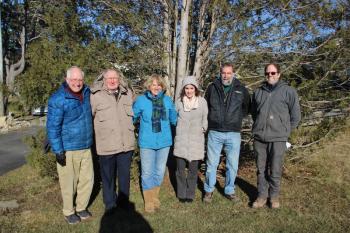 KBIL Board of Directors, from left: Jack Bauman, Howard Wright, Jean McKay, Melissa Holmes Whitt, Bruce White and Eric Wood. Absent: Penny Pollard, Carolyn Nichols and Dawn Kenealy. Courtesy of Elaine Jones
KBIL Board of Directors, from left: Jack Bauman, Howard Wright, Jean McKay, Melissa Holmes Whitt, Bruce White and Eric Wood. Absent: Penny Pollard, Carolyn Nichols and Dawn Kenealy. Courtesy of Elaine Jones
“I have spoken of a thousand points of light, of all the community organizations that are spread like stars throughout the Nation, doing good.” George H.W. Bush
Since 1821, the lighthouse on Burnt Island has marked the approach to Boothbay Harbor, bringing sailors home safely. As it nears its bicentennial in 2021, the lighthouse and keeper’s residence need repair.
Local non-profit organization Keepers of Burnt Island Light (KBIL) is hoping for contributions to help restore and maintain the lighthouse that has kept area mariners safe for almost 200 years.
KBIL was formed in 2008 to help preserve the lighthouse and its surroundings. Now in the middle of its “Keep the light burning” campaign, the all-volunteer organization has raised about half of the estimated $235,000 needed to preserve Maine’s oldest original lighthouse, as KBIL explains in a fund-raising document.
The 197-year old exterior mortar is crumbling and needs to be replaced and joints need to be repointed. Interior work includes repairs to the cast-iron lantern room as well as replacement of the frames holding the light’s red glass panels. The roof, walls, deck and staircase are corroded and need to be cleaned and painted, says KBIL.
Home of the “living lighthouse” program, Burnt Island light offers visitors the opportunity to learn about lighthouse keeping in the 1950s, thanks to volunteers who portray keeper Joseph Muise and his family. According to KBIL treasurer Jean McKay, about 50 volunteers participate in the program each year, some coming from across the state.
Maine Department of Marine Resources’ education director Elaine Jones has been the keeper of Burnt Island Lighthouse for the past 20 years. In a recent interview with the Boothbay Register, she shared some of its history.
Built in 1821, Burnt Island Light was operated by the U.S. Lighthouse Service until 1939 when the service was abolished and duties were transferred to the Coast Guard. In 1988, it was one of the last lighthouses in the nation to be automated, Jones said. In 1996, ownership of 28 Maine lighthouses was transferred through a program the Island Institute orchestrated.
Jones wrote the original proposal for the state to acquire Burnt Island Light. “One of the Coast Guard’s covenants was there must be public access,” she wrote. Today, the Coast Guard is still responsible for maintaining the light and its components like the lens, horn and red glass. The state, however, is responsible for maintaining the rest: tower, buildings and access.
In 2006, an educational center was built on the island with monies donated from national and local contributors. Jones said grant applications like to see local support for projects. The nine-member board of directors is grateful for the extensive efforts of those who support the lighthouse. That support even extends to Eliot (Maine) Elementary School children, who have selected “Keep the light burning” as their 2018-19 service learning project. The children are selling Burnt Island Light t-shirts and sweatshirts and donating pennies for book chapters read during March, among other projects to raise funds.
“No money comes from state taxes,” said McKay, who pointed to the ongoing fundraising efforts to keep Burnt Island Light in good repair. As keeper of the light, Jones is all too familiar with its important role. She recalled the two young boys from Juniper Point who became lost in the fog one summer and made it safely to the island with the help of the fog horn.
“After 200 years, people’s lives still depend on it,” she said. “For that reason, it truly is ‘the people’s light’.”
Donations large or small, or through skilled volunteer labor to the Burnt Island Lighthouse, can be made at https://keepersofburntislandlight.com/make-a-donation.html, or by mail to: Keepers of Burnt Island Light, P.O. Box 738, Boothbay Harbor, Maine 04538. For more information about donations or volunteering, contact McKay at keepersofburntislandlight@gmail.com or 332-5039.
Event Date
Address
United States










